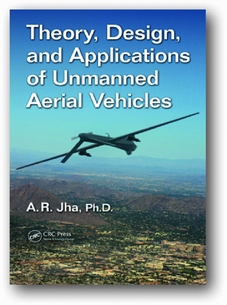
The aim of the author was to provide a ‘complete overview of the theory, design, and applications of unmanned aerial vehicles’. The book falls short of this ambitious task, perhaps due to the ‘tight time schedule’ cited in the preface.
The book mostly focuses on military systems, although there is an introduction to civil Unmanned Aerial Vehicles (UAVs) in the first chapter. The second chapter provides an introduction to ground control stations and the roles of the ground crew followed by a short description of a number of military UAVs operative in various countries. The other chapters deal with technical topics such as the selection of electro-optical components, navigation systems, propulsion systems and the UAV survivability in the battlefield.
The choice of topics is peculiar for an introductory book, with the author focusing on subjects such as electronic connectors and neglecting completely disciplines such as aerodynamics and structural design. Many of the topics are presented in a descriptive way with very little technical knowledge provided to the reader, while on a few occasions, the author presents the subjects in more detail (for example, when describing the Kalman filtering).
Overall, the book is not well structured and topics are presented in a disorganised and inhomogeneous way, with multiple repetitions and important omissions. Some of the pictures appear more than once. There is often the lack of evidence or reference to reputable sources to support the author statements. In several occasions, the author cites ‘Wikipedia articles’ or ‘studies performed by the author’ as the main source of the presented information.


